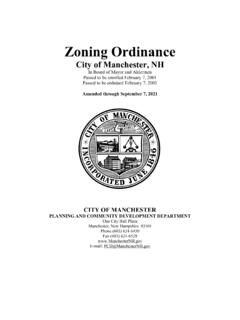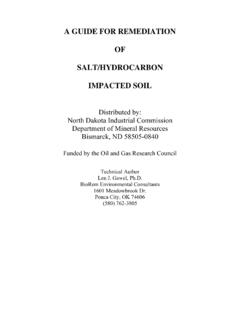Transcription of Microfinance as a Poverty Reduction Tool—A Critical …
1 Economic &Social AffairsDESA Working Paper No. 89 ST/ESA/ 2009 /DWP/89 December 2009 Microfinance as a Poverty Reduction Tool A Critical AssessmentAnis ChowdhuryAbstractThis paper attempts to provide a Critical appraisal of the debate on the effectiveness of Microfinance as a universal Poverty Reduction tool. It argues that while Microfinance has developed some innovative management and business strategies, its impact on Poverty Reduction remains in doubt. Microfinance , however, certainly plays an important role in providing safety-net and consumption smoothening. The borrowers of Microfinance possibly also benefit from learning-by-doing and from self-esteem. However, for any significant dent on Poverty , the focus of public policy should be on growth-oriented and equity-enhancing programs, such as broad-based productive employment Classification: G21, O16, E24 Keywords: Microfinance , Poverty , employment, growthAnis Chowdhury is a Professor of Economics at the University of Western Sydney, Australia.
2 Currently he is working as a Senior Economic Affairs Officier at should be addressed by email to the author: Working Papers are preliminary documents circulated in a limited number of copies and posted on the DESA website at to stimulate discussion and Critical comment. The views and opinions expressed herein are those of the author and do not necessarily reflect those of the United Nations Secretariat. The designations and terminology employed may not conform to United Nations practice and do not imply the expression of any opinion whatsoever on the part of the : Ma gorzata JuszczakUnited Nations Department of Economic and Social Affairs2 United Nations Plaza, Room DC2-1428 New York, 10017, USATel: (1-212) 963-4761 Fax: (1-212) 963-4444e-mail: state of the debate.
3 2 Impacts on Poverty Reduction .. 2 Returns to investment and interest rates .. 5 Explaining the expansion of Microfinance .. 6 Assessing the contributions of Microfinance .. 8 Concluding Remarks .. 9 References .. 10 Appendix: Employment generation as a Poverty Reduction strategy: lessons of history .. 12 Microfinance as a Poverty Reduction Tool A Critical Assessment1 Anis Chowdhury There are many stories of the transformative effect of Microfinance on individual borrowers but until recently there has been surprisingly little rigorous research that attempts to isolate the impact of Microfinance from other factors, or to identify how different approaches to Microfinance change outcomes.
4 [Center for Global Development, 2007; emphasis added].2 Professor Mohammad Yunus, the founder of Grameen Bank in Bangladesh and the originator of the con-cept of Microfinance , believes that 5% of Grameen Bank s clients exit Poverty each However, there are surprisingly few credible estimates of the extent to which microcredit actually reduces Poverty . Even the recent more rigorous research findings are not free of methodological limitations or Thus, the continuing intense debate about the impact of Microfinance on Poverty Reduction is not surprising. Despite the euphoria of the Nobel Peace Prize going to Professor Mohammad Yunus there are still many one can ascertain the impact of Microfinance if the counterfactual what would have hap-pened to a person who borrowed from a microlender if he/she had not done so can be easily tested.
5 Many early studies compared borrowers with non-borrowers. But if borrowers are more entrepreneurial than those who do not borrow, such comparisons are likely to grossly overstate the effect of microcredit. Two recent studies attempted to overcome the problem of self-selection ( , the likelihood of people with entrepreneur-ial skills borrowing) by using randomized sample selection That is, participation in a programme is determined essentially by chance. Contrary to the usual claims, neither study found that microcredit reduced Poverty . Microcredit may not even be the most useful financial service for the majority of poor The MIT study by Banerjee, Duflo, Glennerster and Kinnan ( 2009 ) found no impact on measures of health, education, or women s decision-making among the slum dwellers in the city of Hyderabad, India.
6 Similarly, the study by Dean and Zinman ( 2009 ), which measured the probability of being below the pov-erty line and the quality of food that people ate, found no discernible Microfinance and micro-credit are used interchangeably here. However, in the literature, Microfinance is also used in a broader sense to cover financial services such as micro savings and micro Evaluating the Impact of Microfinance accessed on Dec. 4, Quoted in the Economist s article, A Partial Marvel , July 16, 20094 See, for example, Morduch (2008) for a methodological critique of the Hulme and Mosley (1996) See Debate on Microcredit , Foreign Policy in Focus, accessed on Dec. 3, 2008. Among the prominent sceptics are Thomas Dichter, Aneel Karnani, Vijay Mahajan and Robert Pollin.
7 Salil Tripathi wrote a sceptical editorial in The Guardian (Tuesday October 17, 2006) a week after Professor Yunus was awarded the Nobel Peace Prize. 6 Banerjee, Duflo, Glennerster and Kinnan ( 2009 ) and Karlan and Zinman ( 2009 ).7 The Economist, July 16, 20092 DESA Working Paper No. 89 The state of the debateImpacts on Poverty reductionThe most-cited source of evidence on the impacts of Microfinance is the early set of studies collected by David Hulme and Paul Mosley (1996). The findings of these studies are provocative: poor households do not benefit from Microfinance ; it is only non-poor borrowers (with incomes above Poverty lines) who can do well with Microfinance and enjoy sizable positive impacts.
8 More troubling is the finding that a vast majority of those with starting incomes below the Poverty line actually ended up with less incremental income after getting micro-loans, as compared to a control group which did not get such of the Hulme and Mosley studies imply that credit is only one factor in the generation of income or output. There are other complementary factors, crucial for making credit more productive. Among them, the most important is recipient s entrepreneurial skills. The findings of the MIT study by Banerjee et al also point to this Most poor people do not have the basic education or experience to understand and manage even low level business activities. They are mostly risk-averse, often fearful of losing whatever little they have, and struggling to This does not mean that they do not want to better themselves ( , as suggested by the so-called backward bending labour supply curve).
9 Aneel Karnani (2007: 37) summarizes this point as follows: Most people do not have the skills, vision, creativity, and persistence to be entrepreneurial. Even in developed countries with high levels of education and access to financial services, about 90 percent of the labor force is employees, not entrepre-neurs. According to Vijay Mahajan (2005), a social entrepreneur and chairman of BASIX, Microcredit is a necessary but not a sufficient condition for micro-enterprise promotion. Other inputs are required, such as identification of livelihood opportunities, selection and motivation of the micro-entrepreneurs, business and technical training, establishing of market linkages for inputs and outputs, common infrastructure and some times regulatory approvals.
10 In the absence of these, micro-credit by itself, works only for a limited familiar set of activities small farming, livestock rearing and petty trading, and even those where market linkages are in place. Robert Pollin (2007: 2) has a similar view, and puts it in the following words: micro enterprises run by poor people cannot be broadly successful simply because they have increased opportunities to borrow money. For large numbers of micro enterprises to be successful, they also need access to decent roads and af-fordable means of moving their products to markets. They need marketing support to reach customers. As a matter of fact, most promoters of Microfinance do not wholly disagree that Microfinance alone cannot do the job.


















